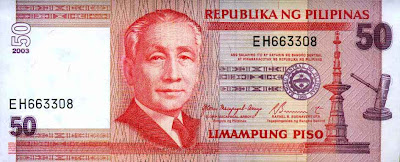This is a very informative video from the Bangko Sentral ng Pilipinas (BSP) that shows how our banknotes are printed. It also explains why with BSPs ability to print money, they don't just print more money.
video sourceThorough planning and deliberation starts the process of making money available to the public. First, the Bangko Sentral's Department of Economic Research determines currency demand based on the expected price movement as well as the growth of population and the economy.
After this, the Cash Department places the order with the Security Plant Complex which in turn procures the materials needed to produce and print the banknotes. When the designs of banknotes are changed, final approval by the President of the Republic is required.
From the approved design, a prototype banknote is prepared. The banknote image is then etched on a master dye from which printing plates are produced. Meanwhile, ink experts mix the exact colors of the money.
With the ink and plates ready, printing begins on special security paper that is composed of 80% cotton and 20% Philippine abaca. This combination gives it a distinctive texture that sets it apart from ordinary paper.
The sheets of banknote paper go through offset printing where 15 to 20 colors of the design are printed at a time. Next, the paper goes through the inaglio printing process which gives the money its embossed look and feel. Raised ink from intaglio printing requires drying for several days.
After this, the banknote sheets are submitted for a series of inspections. The serial numbers are then printed on each banknote which are again subjected to thorough inspection. The sheets are then cut and packed into bundles of 1,000 pieces each.
These are now delivered by the Security Plant to the Currency Management Group from where banks exchange or withdraw their currency requirements. From the banks, the banknotes finally find their way to the economy and our wallets.
 As we commemorate the day of Jesus' birth, philmoney.blogspot.com would like to extend its wishes of joy to everyone.
As we commemorate the day of Jesus' birth, philmoney.blogspot.com would like to extend its wishes of joy to everyone.




